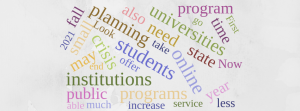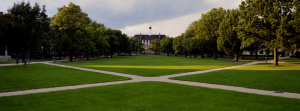Early this year, we at Optimal Campus began thinking about posting a series of blogs focused on what many perceived as a crisis in higher education. Shifting demographics of potential students, rising costs, challenges to the value of higher education, and academic inertia placed higher education at a crossroads. Many were arguing, and we agreed, that, without fundamental changes, the current system of higher education in the United States would be unable to survive. And then COVID-19 happened!
Maintaining the Relevance of Regional Public Universities in the Post-Coronavirus World
Existential crises are not new to regional public universities. Three years ago, an article entitled “Public Regional Colleges Never Die. Can They Be Saved?” suggested that, while regional public universities are the “workhorses of a public higher-education system,” they are “hemorrhaging students and struggling to balance their budgets.” Nathan Grawe’s eye-opening research two years ago forecast that the enrollment and budgetary crunch for regionals would be serious especially in the eastern United States with enrollments declining by 20 percent or more in the next 10 years. One has to be concerned as to the future and viability of the regional state university in our overall higher education system.
What Happens If Students Cannot Return in September?—Defending the Value Proposition of Small Colleges
When colleges expanded spring breaks and then closed campuses for the remainder of the spring term, they felt that this response would get them past the coronavirus crisis. They hoped that campuses would reopen, if not normally in September, at least in a general approximation of normal. Now, that expectation is being questioned. Many colleges are beginning to plan for students to return to campus no earlier than January 2021.
Planning in an Age of Uncertainty—Part 2: Tabletop Exercises
In an earlier blog, I looked at Scenario Planning as a strategy for dealing with the gross uncertainty that colleges and universities face relating to the upcoming academic year. We do not know if and when campuses might reopen; and when they do, we do not know how many students will return.
Planning in an Age of Uncertainty—Part 1: Scenario Planning
Most of us are still reeling from the initial shock of coronavirus. Every element of our being has been upended. As it is for everyone and every organization around the world, we in academe are focused on survival.




